
views
Positioning Your Horse

Get a measuring implement before positioning your horse. Horses can be measured with a measuring stick or measuring tape. There are specific measuring sticks that measure in a unit called “hands" but you can also use a standard measuring tape. However, a horse measuring stick is the easiest way to measure a horse quickly and accurately. Horse measuring sticks can be found at equestrian supply stores (tack shops), farm supply, and from various online retailers. Since horse heights are typically talked about in terms of hand units, if you use a standard tape measure, you will need to convert your measurement into hands. The hand is the most common form of horse measurement in the United States, Canada, and England. However, throughout other locations around the world, the metric system is used to record the horse's height.
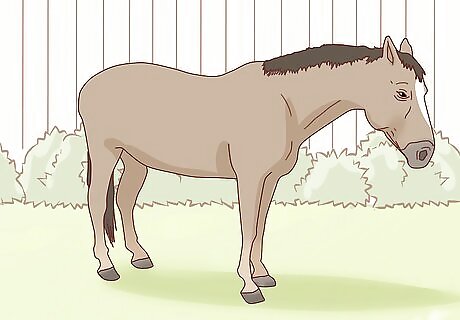
Put the horse on a firm and level area of ground. Make sure that the horse’s hooves are all on equal footing and its body looks tall and well-balanced. It is particularly important to keep the horse’s body level, as uneven ground can impact your measurements. For example, you might position the horse near a wash rack with ties, if you have one in your barn. As another option, the flat, concrete area you typically use to groom or tack your horse will also work great.Tip: Pick a spot that is near something to tie your horse up to so that you can use both hands when measuring it.
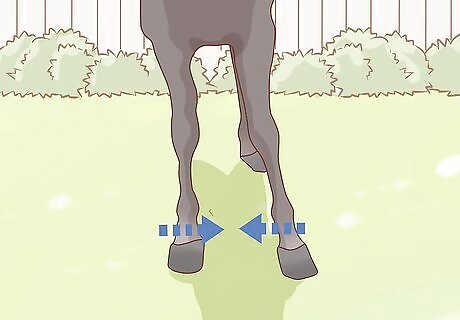
Move the horse’s feet if they are not positioned squarely. You want the hooves to be right next to each other, hips width apart. Having one of the feet in front of the other can throw off your measurement. Having the feet next to each other lines up both legs all the way up to the top of the horse’s body. This line is where you will measure your horse.
Using a Measuring Stick or Measuring Tape
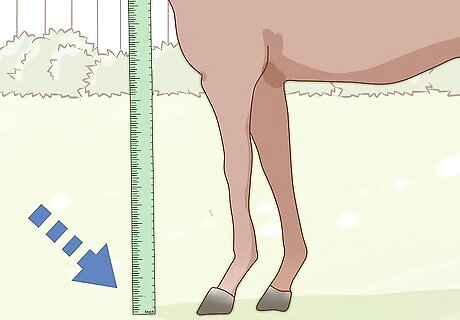
Start your measurement at one of the horse's front hooves. Position yourself on either the side of the horse. Place the end of the measuring tape or stick on the ground at the base of the hoof. If you are using a measuring tape, you may want to have a helper hold the bottom of the tape while you check the measurement at the top.
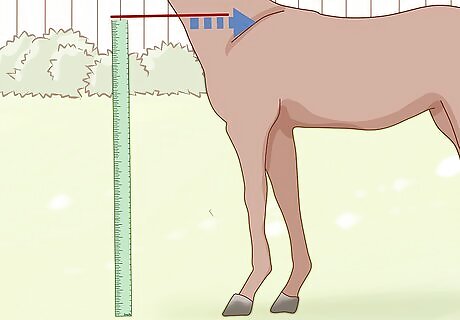
Pull the measuring device straight up to the top of the withers. The withers is located at the top of the shoulders between the neck and back. It is the highest point on a horse other than its head. Although the highest point on a horse is actually the top of its head, also known as the poll, since a horse moves its head up and down frequently it is difficult to record this measurement accurately.Tip: You can locate the withers by looking for the top of the spiny ridge between the horse's shoulder blades.
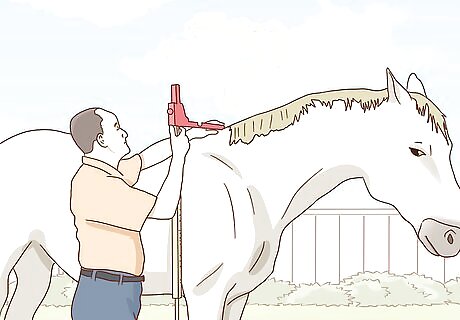
Use a stick to help determine the exact height of the horse, if necessary. Since you are pulling the measuring tape up on the side of the horse and the withers height is at the center of the horse’s body, you can use a stick that you span from on the top of the withers to the measuring tape to find the exact height. If the stick is held level, where the stick intersects with the measuring tape is the height of the horse. Most measuring sticks have an attachment that sticks out and makes a level measurement from the withers. If your horse isn't used to a measuring stick, this can be very alarming to it. Always go very slowly the first time you measure your horse with a stick. When taking subsequent measurements, go as slowly as needed in order for your horse to feel comfortable.
Calculating and Using Your Results
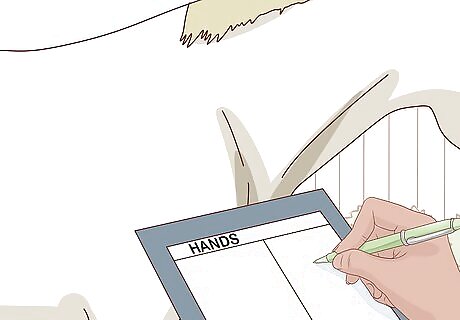
Record the measurement. Whether you are using a standard measuring tape or a horse-measuring device, write down your horse’s measurement right away. This will help you remember it while you are dealing with handling your horse and putting away the measuring device. If the measurement is already in hands, it can be written with an “hh” at the end. This notation stands for “hands high.”
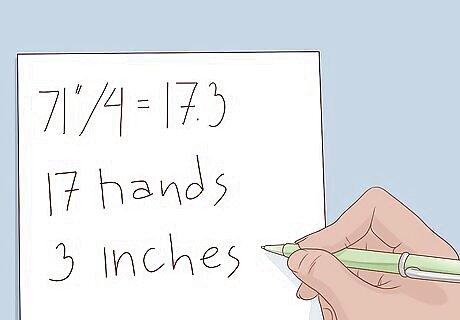
Convert a measurement in inches into hands, if necessary. One hand equals 4 inches (10.2 cm), so divide the measurement by 4. For example, if the horse measures 71 inches (180 cm) tall, divide 71 by 4. The result is 17 hands with 3 inches (7.6 cm) left over. The final height would be recorded as 17.3 hands. If the horse measuring stick or tape is being used, then the measurement can be recorded in hands immediately.
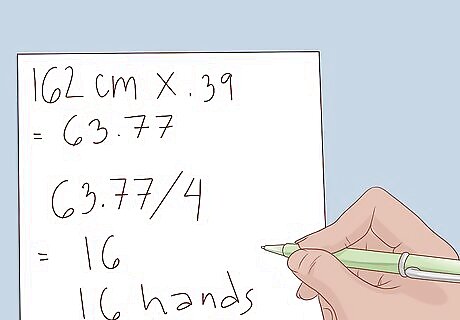
Convert a centimeter measurement into hands, if necessary. The easiest way to do this is to convert the centimeter measurement into inches first. Simply take your centimeter measurement and multiply it by .39. This will give you the measurement in inches. Once the measurement is in inches, it can be divided by 4 and converted into hands. For example, if your horse is 162 centimeters tall, use the equation: 162 x .39. This equals 63.77 inches.

Write portions of hands in a specific decimal form. When a horse’s height includes a portion of a hand, it is written as a decimal after the whole hand measurement. However, it is not a standard decimal form. For a half hand, indicate the measurement with .2, which says that is 2 inches (5.1 cm) in addition to full hands. Use .1 for a quarter hand and .3 for three-quarters of a hand. For example, if the horse is 16 whole hands and 3 inches (7.6 cm) it should be written as 16.3. .1, .2, and .3 are the only decimals you will use. If the measurement is any bigger than that it will just be an additional whole hand.

Use height measurements to determine whether a horse is the size you want. The height of a horse is used most often when buying or selling a horse. Having this measurement allows a person to know exactly how big a horse is and whether a horse will be the right size for them to ride or to do the kind of work they want done. For example, if you like having a horse that is not very tall so that you can get on an off of it easily, pick a horse a that is under 16 hands tall, as 16 hands tall is the height of an average horse. If you want a strong, tall horse so that it will have a lot of strength and stamina, consider getting a horse that is over 16 hands tall. A horse measuring under 14.3 hands high is, by definition, a pony, regardless of its breed.Tip: There are other factors used in determining whether a horse is the right size for you, including how much weight it will have to carry.


















Comments
0 comment